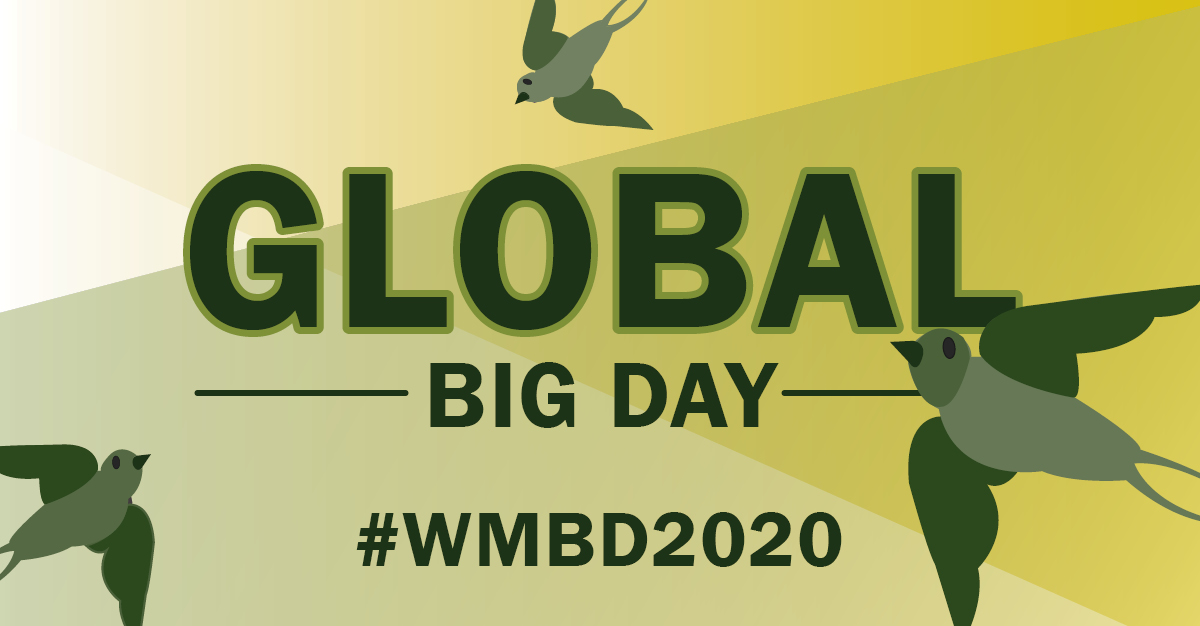Global Big Day is an annual celebration of birds that falls on the same day as World Migratory Bird Day. During a “big day,” participants count as many birds as possible in 24 hours. People from around the world join the effort, birding from either home or a safe location and reporting observations to the Cornell Lab of Ornithology’s eBird online. These observations help scientists better understand global bird populations and track the migration patterns and behaviors of birds.
This year, Global Big Day will focus on the number of checklists that can be collected as a global team. A checklist is simply a summation of the different species the participant saw. Last year, 35,209 eBirders from 174 countries collected an astounding 92,284 checklists in a single day. In 2020 organizers hope to surpass 100,000 checklists of birds in one day.
This year, the Forest Preserves of Cook County and our partners are hosting a virtual World Migratory Bird Day Festival on Saturday, May 9. Visit the Festival Page for more information.
What is bird migration?
Bird migration is the regular seasonal movement—often north and south along a flyway—between breeding and wintering grounds. At least 4,000 species of bird migrate, some journeying a round-trip distance of several thousand miles.
Migration is dangerous and includes many hazards, including physical stress of the trip, lack of food options, bad weather, exposure to predators and loss of habitat. Recently the threat of tall buildings and bright lights have been responsible for the deaths of millions of migrating birds each year.
Birds migrate primarily for two reasons: to find food and nesting locations. As winter arrives, the availability of food become scarce. This signals that it is time for birds to make the move south. As spring approaches, birds make the move back northwards to take advantage of new plant growth, increased numbers of insects, and the abundance of nesting sites.
Migration helps birds keep nature healthy by supporting key functions, such as pollination, seed dispersal and pest regulation. Also, birds that leave and arrive at different places throughout the year are an aesthetic source of pride for cultures across the globe.
Why record what you see?
Data that is collected from sightings contribute to hundreds of conservation decisions and peer-reviewed papers, thousands of student projects, and helps inform bird researchers worldwide. Information that is collected from tracking migratory birds helps researchers learn about where birds nest, where they stop to rest and find food, and where they spend time during the non-nesting season. This information can help protect habitat and mitigate threats that birds face. Researchers use a variety of technologies to aid in these discoveries, such as Motus Wildlife Tracking System, Icarus, Bird Banding, and Journey North.
How can you participate?
Several tools are available to sharpen bird identification skills and record sightings, making it easier for you to participate in this event and help birds from your own back yard:
- Merlin: From the Cornell Lab of Ornithology, Merlin is a free bird ID app that helps identify 6,000+ birds worldwide.
- eBird: Also from the Cornell Lab, eBird Explore is a global database that keeps track of every bird that is observed, sightings that help contribute to migration awareness.
- BirdNET: Tying it all in, BirdNET is one of the easiest ways to identify birds by sound.
- iNaturalist: This tool allows for sharing observations and discussing findings with other naturalists.
- The Audubon Bird Guide: Provides access to identifying and tracking over 800 species of North American birds for people with all levels of experience.

